PROPOSED MARINE
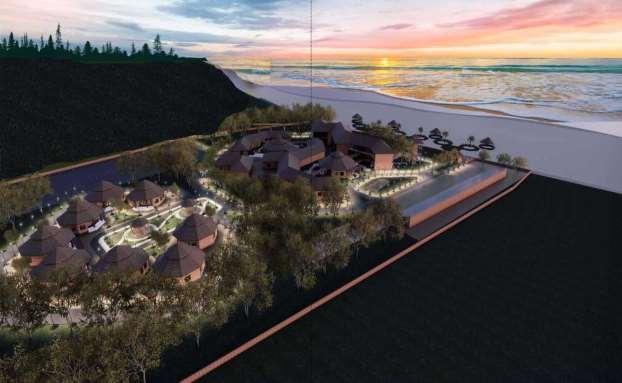
INTERPRETATION AND RESEARCH
CENTER AT SINDHUDURG, MAHARASHTRA
(PART A)
By. Rutuja Mohan Kankekar
MARINE BIODIVERSITY: INTERPRETATION AND RESEARCH CENTER
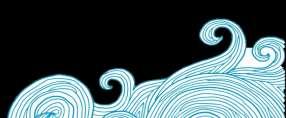
Late Bhausaheb Hiray S.S. Trust’s
DR. BALIRAM HIRAY COLLEGE OF ARCHITECTURE
Affiliated to University of Mumbai
DISSERTATION ON PROPOSED MARINE INTERPRETATION AND RESEARCH CENTER AT SINDHUDURG, MAHARASHTRA
SUBMITTED BY Ms. RUTUJA MOHAN KANKEKAR
UNDER THE GUIDANCE OF PROF. JAGDEEP DESAI
IN PARTIAL FULFILMENT OF BACHELOR OF ARCHITECTURE (2020-21)
It is certified that the work content in the dissertation title
PROPOSED MARINE INTERPRETATION AND RESEARCH CENTER IN SINDHUDURG, MAHARASHTRA

by Ms. Rutuja Mohan Kankekar, has been carried out under my supervision and that this work has not been submitted elsewhere for a degree in fulfilment of requirement for Award of Bachelor of Architecture of University of Mumbai.
PROF. JAGDEEP DESAI
(Thesis Guide)
November 2020
AR. SUNIL MAGDUM
(Principal)
Dr. Baliram Hiray College of Architecture, Mumbai
MARINE BIODIVERSITY: INTERPRETATION AND RESEARCH CENTER CERTIFICATE
DECLARATION
I, Ms. Rutuja Mohan Kankekar a bonafide student of Bachelor of Architecture in Dr. Baliram Hiray College of Architecture, Affiliated to University of Mumbai would like to declare that the dissertation entitled PROPOSED MARINE INTERPRETATION AND RESEARCH CENTER IN SINDHUDURG, MAHARASHTRA submitted by me in partial fulfilment of the requirements for the award of the DEGREE OF BACHELOR OF ARCHITECTURE
is my original work. Wherever I have used materials from other sources, due credit is given to them by citing the sources. This work is free from any plagiarism and I have not misrepresented, fabricated or falsified any idea/data/fact source in my submission. This work or any part of it, has not been previously submitted by me or any other person for assessment for this or any other course of study.
 Ms. Rutuja Mohan Kankekar
Ms. Rutuja Mohan Kankekar
MARINE BIODIVERSITY: INTERPRETATION AND RESEARCH CENTER
ACKNOWLEDGEMENT
It is my immense pleasure that I am presenting my thesis research on ‘MARINE INTERPRETATION AND RESEARCH CENTER’

I would like to take this opportunity to express my feelings of gratitude and indebtness to several people who helped me directly or indirectly to conduct my research work. The completion of this research would not have been possible without the participation and assistance of many people whose names may not be enumerated.
However, I would like to thanks and express gratitude towards my humble guide Prof. Jagdeep Desai for constantly supporting and guiding throughout my research. Also, I would also like to thank all faculty members of Dr. Baliram Hiray College of Architecture for their constant coordination and co-orporation.
Finally, I would like to thank my parents, relatives and friends and everyone closely and remotely associated in this study for constantly supporting and encouraging me in the exploration of my thesis.
MARINE BIODIVERSITY: INTERPRETATION AND RESEARCH CENTER

MARINE BIODIVERSITY: INTERPRETATION AND RESEARCH CENTER TABLE OF CONTENT List of figures………………………………………………………………………………5 Abstract ……………………………………………………………………………………7 1. Chapter 1: Introduction ………………………………………………………………….8 1.1 Introduction and background 1.2 Need and justification 1.3 Aim and objective 1.4 Scope and limitation 2. Chapter 2: literature review……………………………………………………………….15 2.1. Understanding the background of marine conservation in India 2.2. Marine and mangrove biodiversity in Sindhudurg 2.3. Steps taken for coastal tourism and infrastructure 2.4. Analysing the proposed infrastructure 3. Chapter 3: Data Collection……………………………………………………………….21 3.1 Interpretation area 3.2 Educational facility 3.3 Research and service facility 3.4 Technical data to setup aquarium 4. Chapter 4: Case study…………………………………………………………………... 29 1.1 Oceaneum German Oceanographic Museum (Online Case study) 1.2 Mapungubwe interpretation Centre, South Africa. (Online Case study) 1.3 Taraporewala aquarium, Mumbai (Live Case study) 1.4 Coastal and Marine Biodiversity Centre, Airoli. (Live Case study) 5. Chapter 5: Programme …………………………………………………………………. 47 6. Chapter 6: Site ……………………………………………………………………………49 3.1 Site Location and justification 7. Chapter 7: References…………………………………………………………………….71
MARINE BIODIVERSITY: INTERPRETATION AND RESEARCH CENTER

Fig.1. Marine biodiversity zones
List of figures
Fig.2. Map of mangrove biodiversity in world
Fig.3. Mangrove species
Fig.4. Interdependency of different species on of mangroves
Fig.5. The distribution of anthropogenic stressors faced by marine species threatened with extinction in various marine regions of the world.
Fig.6. Importance of mangroves
Fig.7. Drivers of mangrove depletion
Fig.8. Marine museum
Fig 9. a. Coral reef tank
b. Touch pool
c. Sea shell display
Fig.10 a. Fossil library
b. Invertebrate section
Fig.11 Quarantine area
Fig.12 Research and lab
Fig.13 Oceaneum German Oceanographic Museum
Fig14 a. Site plan Oceaneum
b. zoning
Fig 15 Ground floor plan
Fig 16 First floor plan
Fig 17 Section1 and 2
Fig 18 Aquarium plan
Fig19 Cladding
Fig20 Mapungubwe interpretation Centre
Fig21 Limpopo, Zimbabwe
Fig22 Site plan
MARINE BIODIVERSITY: INTERPRETATION AND RESEARCH CENTER

Fig23 Cairns
Fig24
a. Section 1
b. Section 2
Fig25 Play of natural light and show on the structure
Fig26 Reflecting pool
Fig27 a. Construction process
b. material
Fig28 Internal circulation
Fig29 Roof lighting
Fig 30 Soil Cement tile as External finish
Fig31 Location map of Taraporewala aquarium
Fig 32 Ground Floor plan
Fig 33
Fig 34
Fig 35
LSS diagram
Marine biodiversity center, Airoli
News article about endangered species in coastal Sindhudurg
Fig 36 News article about sawfish extinction
Fig 37
Fig 38
Abstract
Though India being a peninsular country with approx. 7000 sq.mt. coastline, its discourse is not dominated by coastal areas and Oceans the way terrestrial issues are. Multiple rivers present in the peninsular region of India makes it rich for coastal wildlife. Our climate and ecological balance are driven by oceans, water-based life forms. Arabian sea has a very long continental shelf of 100 km; therefore, shelf dwelling whales are present in the vicinity of 12 km, but they are not represented anywhere. Arabian sea is also home to humpback dolphins which is globally threatened, endangered and red listed
“Out of site, therefore out of mind” is the problem with the ecosystem that are marine and water based. Therefore, there is a need to demystify what is going on in our oceans and try to make people think about it. So that, there is awareness about the big drivers of climate change on our planet.

MARINE BIODIVERSITY: INTERPRETATION AND RESEARCH CENTER
1. Chapter 1: Introduction
.1 Introduction and background
1.1.1 Marine Biodiversity
Marine ecosystems are habitats that complete the larger system from the shores to the dark sea floor.

The marine ecosystem includes marshes, tidal zones, estuaries, the mangrove forest, lagoons, sea grass beds, the sea floor, and the coral reefs
1.1.2 Biodiversity types:
1. Ecosystem biodiversity:
It describes the variation found within a specific geographic region. It allows you t compare the degree of biodiversity between ecosystem – both similar and different across ecosystems within a given biome or geographical region.
2. Species biodiversity:
It is a common interpretation of biodiversity. For e.g. a coral reef is likely to be inhibited by a greater number of fish species than the open ocean. An area rich with numerous species is often viewed as being healthier and more resilient than an area with less species diversity.
3. Genetic diversity:
Genetic diversity refers to variation in the genome of a species. Genetic diversity allows species to adapt to changing survival pressures.
1.1.3 Importance of Marine biodiversity

• Marine species cause half the primary production on earth.
• Without these surface waters, the oceans would quickly run out of food.
• Marine organisms contribute to many critical processes that have direct and indirect effects on the oceans and human health. There are specific species play critical roles in important ecosystem processes, and the loss of these species may have significant influences on the whole ecosystem.
Looking at ecosystems in terms of the goods and services they provide, allows us to realize their full value and our dependency on those systems in the broadest sense.
MARINE
INTERPRETATION AND
BIODIVERSITY:
RESEARCH CENTER
Fig. 1. Marine biodiversity zones
1.2 Mangrove biodiversity



Mangrove forests make up one of the most productive and biologically diverse ecosystems on the planet. Mangrove forests only grow in tropical and subtropical latitudes near the equator as they cannot withstand freezing temperature.
They can be recognized by their dense tangle of roots that make the trees appear to be standing on stilt above the water. Thus, allows the trees to handle the daily rise and fall of tides, which means that most mangroves get flooded at least twice per day. The roots also help in slowing down the movement of tidal waters, causing sediments to settle out of the water and build up the muddy bottom.
MARINE BIODIVERSITY: INTERPRETATION AND RESEARCH CENTER
Fig.2. Mangrove biodiversity in whole world
Fig. 3. Mangrove ecosystem species
1.2.1 Importance of Mangroves:
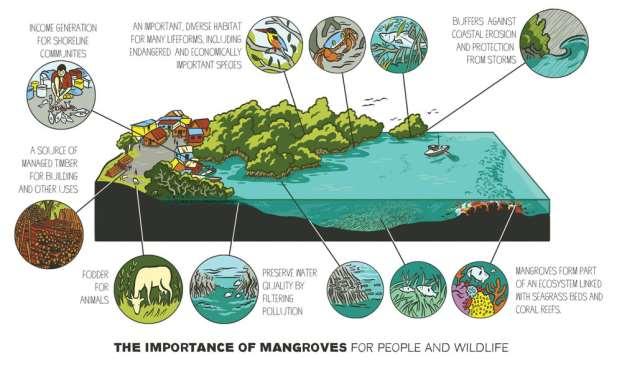
• They are a natural coastal defence
The sturdy root systems of mangrove trees help form a natural barrier against violent storm and floods. River and land sediment are trapped by the roots, which protects coastline areas and slows erosion. This filtering process prevents harmful sediment reaching coral reefs and seagrass meadows.
• They are carbon sinks

Mangroves have the ability to absorb up to four times more carbon dioxide by area than upland terrestrial forests. Coastal forests help the fight against global warming. When dead mangrove tree roots, branches and leaves are covered by soil, and then submerged under tidal water it slows down the breakdown of materials and boosts carbon storage.
• They provide livelihoods
Many people living in and around mangroves depend on them for their livelihood. Plant extracts are collected by locals for their medicinal qualities and the leaves of mangrove trees are often used for animal fodder. The forest waters provide local fishermen with a rich supply of fish, crabs and shellfish to sell for income.
• They are rich in biodiversity
The mangroves form a nutrient-rich breeding ground for numerous species that thrive above and below the water surface. The fish and other organisms seeking food and shelter from predators are attracted to the intricate root system of mangroves. The trees are home to an array of nesting, breeding and migratory birds. When mangrove forests are cleared their habitat is lost, threatening the survival of myriad species. But also, these forests are a potential source of undiscovered biological materials that could benefit mankind, such as antibacterial compounds and pest-resistant genes, which are also lost when coastal areas are cleared.
MARINE BIODIVERSITY: INTERPRETATION AND RESEARCH CENTER
Fig. 4 Interdependency of different species on of mangroves
1.3 Inter- relation between mangroves and ocean ecosystems
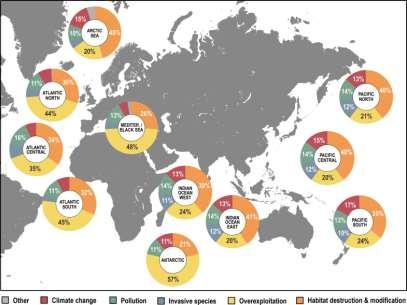

"If there are no mangrove forests, then the sea will have no meaning. It is like having a tree with no roots, for the mangroves are the roots of the sea."
Mangrove forests were once generally dismissed as swampy wastelands. Planners, scientists, and coastal dwellers have now come to value them as the remarkably diverse and important ecosystems they are.
Mangroves, seagrass beds, and coral reefs work as a single system that keeps coastal zones healthy. Mangroves provide essential habitat for thousands of species. They also stabilize shorelines, preventing erosion and protecting the land and the people who live there from waves and storms.
Numerous marine species, including fish and shrimp, use mangroves as nurseries during early life stages. An accumulation of, bacteria and mangrove tree detritus provide plenty of food for growing youngsters and, hidden in the thickets of the mangrove roots, juveniles are more likely to avoid predation from larger animals. When the mangrove refuge is no longer required, these animals venture out into the adjoining reefs or the open ocean. In this manner, mangroves act as a critical source to replenish some of the ocean’s fish stock.
1.4 Need and justification
Approximately 70 percent of the Earth's surface is covered by water, and most of that is marine. Like all biological systems, the oceans are experiencing an ecologically and evolutionarily unprecedented series of stresses, many of which are changing the structure and organization of marine communities. Because humans rely on the oceans for food, mineral resources, and recreation, and because marine life offers potential future benefits to society, such as in the area of biomedical products, it is critical to develop conservation and management strategies that facilitate the long-term sustained use of the sea by humans while minimizing impacts on nature.
MARINE BIODIVERSITY: INTERPRETATION AND RESEARCH CENTER
Fig 5. The distribution of anthropogenic stressors faced by marine species threatened with extinction in various marine regions of the world.
MARINE BIODIVERSITY: INTERPRETATION AND RESEARCH CENTER

Ocean observations that monitor biodiversity and measure species distribution and density in marine ecosystems enable policy makers to respond to, protect and manage ecosystems that are under threat. Marine ecosystems are integrally linked to global climate and monitoring and studying these ecosystems allows scientists to better predict the impact of climate change on biodiversity and human populations.
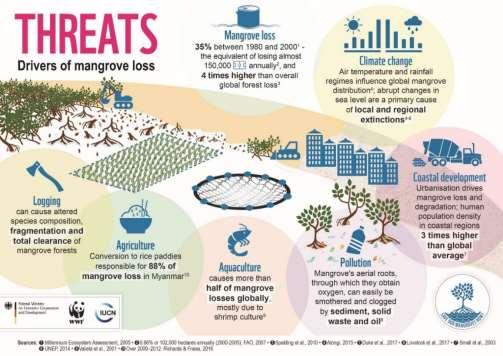
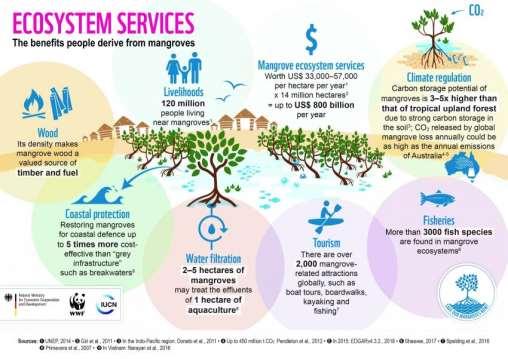 Fig. 6. Importance of mangroves
Fig. 7 Drivers of mangrove loss
Fig. 6. Importance of mangroves
Fig. 7 Drivers of mangrove loss
1.5 Aim
Aim: To conserve and educate about marine biodiversity by creating an interpretation and research centre in Sindhudurg
• Promote Responsible tourism: This centre shall act as an educational entertainment to the visitors (tourists) and sensitize them by bringing the marine ecosystem in their sight.
• Promote Education and Conservation: Research facility in the centre allows in depth research and monitored observation of ocean and mangroves biodiversity.
1.6 Objectives:
1.6.1 Conserve the marine biodiversity
• The research unit will focus on researching so as to help conserve the wild species and help balance their number.
• The research unit will keep a keen observation about the biodiversity changes in the coastal areas and the deep sea
1.6.2 Educate about the marine biodiversity

• It will bring the rather out of site marine life and ecosystems in their sight which will help educate people (visitors) about marine and mangrove ecosystems in a very informal way.
1.6.3 To promote responsible tourism in Sindhudurg
• It is an attempt to change the way tourist and the people interact with the environment (and imbibe healthy way of co-existing)
• From decades the coastal communities and their histories are not focused upon and forgotten so this centre acts as an opportunity to exhibit.
1.6.4 Act as a collaborating space for marine experts with local fisheries sector and marine enthusiasts.
• The sea shores, oceans and mangroves have been providing living to the local fishermen and they are highly depending on it for economy so educating and helping them to have more sustainable practices will benefit them in keeping their resource infinite and economic profit
MARINE BIODIVERSITY: INTERPRETATION AND RESEARCH CENTER
1.7 Methodology:
To create this collaborative experience within the locals, researchers and the tourists in the area rich in its biodiversity there is a need to create a sustainable module for which the aspects of nature-based tourism, educational facility and local communities is taken account of. While the moto of the project is to dive deep into the conservational aspect of marine diversity it is important to sensitize the tourists and locals about the marine environment as these tourists play an important part.
1.7.1 Various Activities can be followed to achieve the goal:
• To understand the background of marine conservation in India

• Studying about marine and mangrove biodiversity in Sindhudurg and why is conservation needed.
• Analyse the steps taken towards infrastructure related to conservation of marine wildlife
• Studying similar structures to formulate a programme
• Doing a comparative analysis of the possibilities of sites in Sindhudurg.
1.8 Scope and limitation:
1.8.1 Scope:
• India being a peninsular country is rich in marine life and species therefore there is an increase in the demand of development and conservation of our marine wealth. There is no state of art facility available in the country for scientific research and awareness.
• Urbanization, progressive development and pollution have resulted in decline of marine species in and around India.
• Apart from tourism it also helps creating awareness about marine environment and biodiversity.
1.8.2 Limitation:
• Large scale interpretation centres and Oceanariums are yet to come up in India, hence for live case studies aquariums and small-scale interpretation centres are being opted.
• Site chosen to work will be sufficient enough to work in the span of 6 months
MARINE BIODIVERSITY: INTERPRETATION AND RESEARCH CENTER
2. Chapter 2: Literature review
2.1 Understanding the background of marine conservation in India:
2.1.1 Why is marine conservation still an uncharted zone:

• A glance at the map of India is enough to understand how vast and wide-ranging the country’s biophysical environment is from alpine meadows on the Himalayan slopes to coral reefs along the ocean floors.
• The Ministry of Environment, Forests and Climate Change has given the Forest Department the responsibility to conserve the wildlife that inhabits these vast ecosystems.
• Apparently, the official policy assumes that these different eco-scapes can be governed as ‘forests’, failing to recognise the fact that each of these different ecosystems, especially marine spaces, has its own dynamics and conservation requirements.
2.1.2 If it works on land why not sea?
• While this policy may have been working on land, it is proving to be less effective at sea where biodiversity is constantly in motion moving along with the currents.
• In this highly dynamic environment where everything is in action, fixed zoning is almost meaningless. Even if such areas were to be defined, physically marked boundaries at sea would be a major obstacle.
• Physically defining boundaries at sea mean placing anchors as navigation mark or floating lines both costly to set up and maintain and will in all likelihood get washed away within a few years.
• This means that most MPAs will have uncertain boundaries, and rules will be difficult to enforce as space within which they apply would remain unclear.
2.1.3 Limited infrastructural support
• Access to basic infrastructure like sturdy boats, buoys and telecommunication is meagre in such areas. Developing adequate infrastructure in the MPAs such as setting up boundary markers, communication lines and providing medical aid is an extremely demanding job.
• The limited connectivity also makes it difficult for the field staff to get access to electricity, freshwater and other essential supplies. Here, communication and transportation of material to remote islands are difficult tasks. In places where even maintaining infrastructure on the land itself is a struggle, it would be unrealistic to expect rapid development of supporting infrastructure at sea.
MARINE BIODIVERSITY: INTERPRETATION AND RESEARCH CENTER
2.1.4 The immediate need
The growing need to protect the country’s coastlines and islands from threats such as climate change has led to the establishment of a number of protected areas along the coast and in seascapes.
• Multilateral treaties such as the Convention on Biological Diversity are stressing the importance of conserving the marine ecosystems and the pressure to maintain MPAs is mounting. In such uncertain situation, blaming the Forest Department for tardiness in conservation may be easy, but the need of the hour is to understand and address these institutional discomforts and aim at progressive collaborations
• What could work in the marine systems is seeking strong support from the research community which could work in partnership with the managers. Specialised modules could be placed at marine states forestry training academies for marine PA managers by the same set of knowledgeable management-oriented researchers and experienced field managers as and when required. Once we have a larger, experienced set of field managers, they also could contribute to such training to groom a new generation of MPA managers.
• It will take time for the Indian Government to invest in specialized marine department, given the vast and more diverse ecosystems it will be responsible for. Therefore, a more practical step would be to segregate the existing Wildlife Wing into terrestrial and marine wings within the Forest Departments in coastal states. Recognising the different requirements and contexts of these two ecosystems would make it possible to usher in more flexibility in managing both, given the existing set of resources.
• The new National Wildlife Action Plan for 2017-2031, recognises the fact that the set of spaces particularly vulnerable to climate change are the oceans. By recognising a wider range of ecosystems, it has started the way for a reformation in the way marine and coastal spaces are governed in the near future.

• For e.g., one of the calls to action described in the NWAP is to “strengthen the field-based capacity to promote integrated and sustainable management of coastal and marine biodiversity”, and it recommends a project for the building of officers and frontline staff of the State Forest Departments and other relevant Departments and Agencies for managing coastal and marine ecosystems. This should include the Fisheries Department because most MPA and the waters that surround them also serve as important fishing grounds, and the jurisdictions of the Fisheries and Forest Departments often overlap. The staff of the Fisheries Department is supposed to be trained in monitoring and managing marine resources but they too face similar challenges as that of the Forest Department.
• With these increasing improvements, it shouldn’t be too long before we stop feeling a bout of seasickness when it comes to managing conservation in marine spaces.
MARINE BIODIVERSITY: INTERPRETATION AND RESEARCH CENTER
2.2 Marine and mangrove biodiversity in Sindhudurg:
2.2.1 Introduction
It was found that the biodiversity of the region was getting drastically affected by anthropogenic impacts such as:
• habitat destruction and fragmentation due to deforestation
• mono-culturing and competitive fishing practices such as bottom trawling and use of purse seine nets
• use of unpermitted mesh-size fishing nets and fishing during breeding season in the sea as well as the creek
• poaching of protected species and collection of sea-shells
• lack of awareness and concern for conservation practices
• increased artificial lighting along beaches and insufficient coast guard monitoring.
2.2.2 Biodiversity in Sindhudurg:
• The Sindhudurg Coastal and Marine Ecosystem (SCME), located on the west coast of India (Maharashtra) is one of the 11 ecologically and economically critical habitats identified along the Indian coast.
• Critical habitats include: rocky shore, sandy shore, rocky island, estuaries, mud flats, marshy land, mangroves, coral reefs, and Sargassum forests.
• There are 367 species of marine flora and fauna reported from the area which include: 73 species of marine algae, 18 species of mangroves, 11 species of coral, 73 species of molluscs, 47 species each of Polychaetes and arthropods, 18 species of sea anemones and 74 species of fishes
• Globally significant species include Whale shark, Indo-pacific humpback dolphins, Olive Ridley, Green and Leatherback turtles, and corals.

• The area has a rich repository of corals, with the recent discovery of a large coral area in Angria Bank. Due to its high ecological importance, 29.12 sq. km of SCME was designated as the Malvan Marine Sanctuary in 1987 and is one of seven marine Protected Areas in India.
2.2.3 Effects on biodiversity:
SCME has enormous economic significance as well, being one of the major fish landing centres, and as a rapidly emerging tourism destination.
• The primary drivers of ecosystem degradation in the SCME include unsustainable fishing by trawlers, an expanding tourism sector, and pollution from fishing vessels and other maritime traffic.
• Agro-chemical and industrial pollution are relatively limited at present but a precautionary approach is warranted, and climate change poses an impending threat. The existing institutional arrangement in the SCME is inadequate in addressing these issues from a landscape perspective.
MARINE BIODIVERSITY: INTERPRETATION AND RESEARCH CENTER
2.2.4 Effects on Locals:
• It is also clear that coastal areas are the habitats of fishing communities. These communities are in double danger as well – ironically, from conservation and from development

• On one hand, these communities are marginalized and even alienated from their lands because of the need for conservation in marine parks or forested islands. And on the other, they are in jeopardy because of large development projects which displace them and take over their lands and livelihood. Their land is prized today for tourism and high-end housing projects.
• Future policies for coastal area management must reverse these trends and find approaches to conserve and protect vulnerable ecosystems and secure livelihoods and habitats of its people. This is the challenge.
2.2.5 Problems faced by coastal areas in Sindhudurg:
• The local traditional fisherman is getting marginalized due to commercial trawlers and Persian net fishing. The number of ‘Rapan Sangh’ (group of traditional fishermen) and members in it has decreased considerably in the last decade. Fishing grounds are neither mapped nor regulated, leaving the stakeholders unaccountable.
• Along the coast there is a rich repository of corals which is one of the main tourist attractions now. ‘Scuba Diving’ and ‘Snorkelling’ especially near Sindhudurg Fort, Malvan rocks give an easy and affordable option to both - service providers and tourist. However, there are no guidelines & training for safety of tourist, dress code& code of conduct, and most importantly authenticity of the majority of service providers.
• Corals are very fragile. Scuba divers (service providers) and Tourist are making it more vulnerable by improper conduct in the field.
• The majority of the beaches like Tarkarli-Devbag, Tondavali, vulgar, Shiroda etc. used for beach tourism geomorphologically is a spit – a detached type of beach with Arabian Sea to its west and rivers bordering their eastern margins in the major section of the beach. In the majority of the situations all trafficking is along the narrow road that runs all along from north to south of the spit. There is an urgency for site specific traffic management policies or solutions, especially on Tarkarli- Devbag spit.
Inference:
• Sindhudurg district coastal zone today are facing challenges from various fronts such as population shifts, local conflicts, economic growth, developmental realities, erosion, flooding, increased tourism and lack of sustainable policy to name a few. For effective coastal zone management along Sindhudurg coast, we need to integrate diverse information encompassing various natural as well as man- made aspects.
MARINE BIODIVERSITY: INTERPRETATION AND RESEARCH CENTER
2.3 Steps taken for coastal tourism and infrastructure in Sindhudurg:
A.Maharashtra’s Sindhudurg beach eyes international recognition: So far, no beach in India has qualified for the Blue Flag certification which is an international recognition for the cleanest and most developed coastal areas in the world.
• The Ministry of Environment, Forests and Climate Change (MoEFCC) issued an order on July 12 identifying 12 beaches for the certification. In order to attain the certification, they have permitted construction of required temporary structures such as toilet facilities, changing rooms, shower panels, water recycling and treatment plants, purified drinking water kiosks, required access and approach roads, and lifeguard watch towers, for these 12 beaches. These facilities are otherwise not permitted under coastal regulation zone (CRZ) areas.
• Blue flag is a 100% commitment to the people and conserving the coastal environment as stated by Sanjai Jalla, mission leader and management consultant for the project in India.
• In order to qualify for the Blue Flag, coastal zones have to meet and maintain a series of rigorous environmental, educational, sanitary, safety and accessibility criteria.
B. Proposed sea world in Sindhudurg: From 2009, Sindhudurg is planning to increase coastal tourism and proposed modules as discussed ahead:
• ‘Sea World’ inspired by the US-based theme park chain The project that was meant to boost tourism in the Konkan region.

• The BJP-led Maharashtra government had initiated the process of land acquisition two years ago. It took the private purchase route to encourage locals to part with their land.
• The multi-crore project was to come up in the villages of Tondavali and Vayangani in the Konkan district. The government had planned to implement it on a public-private partnership model and was hoping to conclude land acquisition in a year.
• Government was to acquire 1,390 acres for the core water-themed amusement park as well as for the development of ancillary tourism facilities such as hotels, resorts and restaurants around it.
• In 2014, government decided to scale the project down to about 350 acres, just enough to build the core amusement park and dropped plans for land acquisition to build a tourism eco-system.
• The project was part of the state government’s grand plan to aggressively promote tourism in the coastal Sindhudurg district, by upgrading its forts, improving transport infrastructure, building helipads, and setting up resorts at the Sawant wadi Palace.
MARINE BIODIVERSITY: INTERPRETATION AND RESEARCH CENTER
2.4 Analytical Study regarding marine infrastructures:

To showcase underwater world, educate and bring the marine animals in sight in the name of educational entertainment the infrastructures developed by the government are sea world, marine amusement parks and oceanariums. India also plans to have them because of the economic benefit due to increase in tourism, bringing people close to under water-world and developing coastal tourism. A few proposed examples: Proposed oceanarium in Kochi- Kerala, MahabalipuramChennai, Somnath- Gujrat.
But unfortunately, such proposals have a bigger hidden problem as oceanariums consist of marine mammal exhibits, dolphinariums, amusement parks where these animals are kept in captivity.
Marine animals especially mammals do not adapt well to these enclosed spaces. These animals travel 200km a day but keeping them in captivity acts like a prison to them They are meant to transvers the oceans They have been evolved in a way that there is a biological need to swim in oceans and catch the prey They suffer from psychological and physiological injuries and disorders. In wild these animals show amusing interest in social interaction and communication.
2.5 Interpretation as an effective management strategy
Using education as a tool for managing tourists can be an effective means of reducing negative impacts upon the animal. In order to shape visitor behaviour, the education program should include factual information about the animal, potential impacts from the tourist activity and information about the guidelines used to manage impacts. It is then assumed that tourists will be motivated to adhere to guidelines in order to reduce their impacts.
Visitor education is an extremely important issue that provides tourists with an understanding of why it is necessary to obey guidelines, helping to make them more effective in following them. The implementation of an education program significantly reduced inappropriate tourist behaviours such as touching, and state that education is an important strategy when compliance with management regulations is necessary to protect wildlife in ecotourism settings Such education programs are an indirect way of managing tourist behaviour in the short term, and are often termed ‘interpretation’.
MARINE BIODIVERSITY: INTERPRETATION AND RESEARCH CENTER
3. Case studies:
3.1 For museums related to marine environment:

Name Type Reason
3.1.1 Oceanographic museum, Germany. online Detailed case study for understanding area, planning, form, lighting.
3.1.2 Marine Science Museum, Taiwan online To understand different exhibition areas
3.1.3 Marine Science Museum, Mali Lošinj online
To understand functioning of spaces related to marine science.
3.2 For interpretation center
Name of structure Type Reason
3.2.1 Mapungubwe online Detailed study of structure
3.2.2 Wasid nature reserve visitors center online To study the indoor and outdoor connection.
3.3 For live case studies
Name of structure Type Reason
3.3.1 Taraporewala Aquarium, Mumbai Live To understand the details of aquarium
3.3.2 Marine and mangrove biodiversity center, Airoli Live To study the outdoor functions like nature trails and marine bird watching.
MARINE BIODIVERSITY: INTERPRETATION AND RESEARCH CENTER
CLICK HERE TO VIEW CASE STUDIES
4. Chapter: Data Collection
ZONE 1: INTERPRETATION CENTER
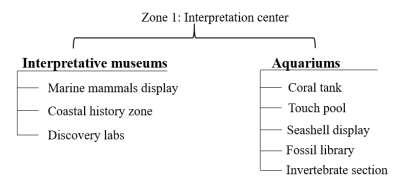
ZONE 2: RESEARCH CENTER
ZONE 3: ACTIVITIES IN OUTDOOR SPACES
4.1 Zone 1: INTERPRETATION
4..1.1 MARINE INTERPRETATIVE MUSEUM
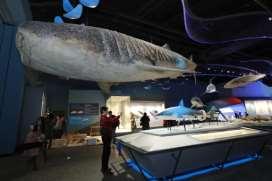
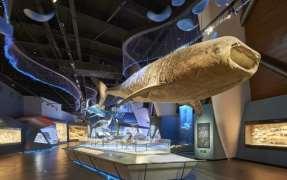

A) Parts of the marine museum:
1. Aqua interpretative Museum
• Basically, has display of unusual marine animals and some interesting features about them like sea horse, sea dragons, octopus.
• It gives full information about marine life and how that can be conserved.
2. Fishing History
• Fishing department has fishing information and short information about how it started and how it is carried out
• Fishing objects that are used will be displayed.
3. Discovery lab
• Students and oceanographers get information about the behaviour of different sea animals and fishes and even get to touch and feel them
• Small part of the lab is accessible to the people who want to visit the lab.
MARINE BIODIVERSITY: INTERPRETATION AND RESEARCH CENTER
Fig. 8. Marine museum
MARINE BIODIVERSITY: INTERPRETATION AND RESEARCH CENTER

B) Technical Data:
Planning and circulation:
The planning of museum should be such that the building should be iconic over period of times reflecting the past, present and future image of city.
• 8-9 feet wide corridors minimum to handle 2way traffic.
• Rounding and angling corners so there are sight lines to the intersecting corridor.
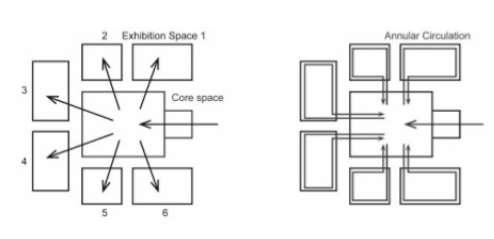
Lighting:
• In museum lighting determines how we feel and perceive things
• It must highlight the object on display
• Shall create right ambience
• 100-200lux is appropriate for lighting museums and exhibitions
• Two kinds:
A) Natural:
1)overhead lighting: provides steady source of light, therefore wall space is left free to display and exhibit however maintenance is a problem.
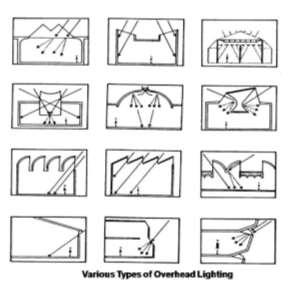
2) lateral lighting: provided by windows and openings on walls, convenient and economical method for regulating ventilation and temperature and also provides view however causes glare and reflections which impedes the visibility and decreases flexibility of layout.
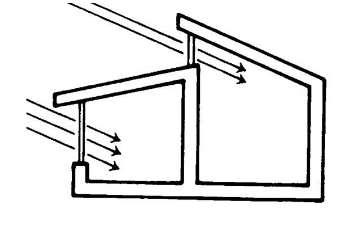
MARINE BIODIVERSITY: INTERPRETATION AND RESEARCH CENTER

B) Artificial:
• It is desirable for the exhibition to have both light and dark areas so that the object stands out.
• Types of sources:
a) Direct lighting:
• Recessed in ceilings and walls
• Surface mounted
• Suspended
• Portable
b) Indirect lighting
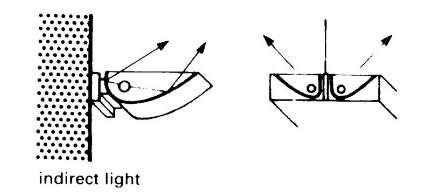
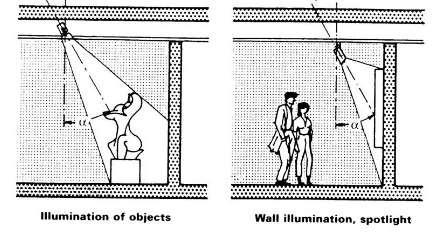
• Cove or valence lighting
• Wall brack
• Uplight suspended from ceiling
c) Display lighting:
• Incandescent lamps are often used
4.1.2 AQUARIUM:

A) Types of aquarium displays
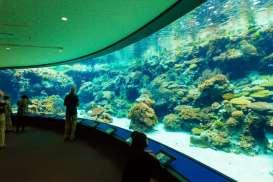
• Aquarium displays contain fishes, reptile, invertebrates and many wide varieties of species. Aquarium display is arranged in different shapes, sizes and forms that create an interest to the visitors.
• Circulation area for the visitors is designed not just in a straight line but with curved pathways and ranging width of the corridor to enhance the interest of the visitors. Aquarium displays have the following galleries:
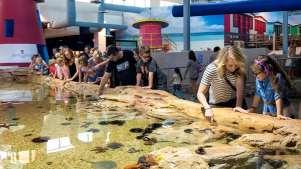

Coral reef tank:
• Coral reef tank displays live corals and marine invertebrates as well as fishes that play important role in maintaining the tropical coral reef environment

• Golden and diamond travel lies tarpon, squirrelfish and rainbow runners can be seen. Also, smaller fishes orbit the impressive central rockwork.
Touch Pool:
• Allows children to physically feel the marine harmless species with their bare hand.
• Blue spotted sting ray, turtles, nodular sea starts, banded bamboo sharks and porcupine puffers These harmless creatures are kept in a normal pool with desired temperature.
MARINE BIODIVERSITY: INTERPRETATION AND RESEARCH CENTER
Fig. 9b. Touch Pool
Fig. 9a. Coral reef tank
Seashell display:
• Showcase more than 100 species of sea shell from all over the world in all sizes shapes, shades
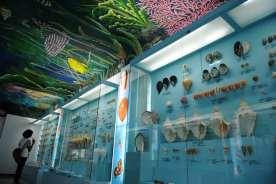

• Includes large scale models of sea shells to add interest.
Fossil Library:
• Remains or impression of prehistoric plant or animal embedded in rock and preserved in petrified form.
• Gallery is made to discover the fossils with its documentation and information
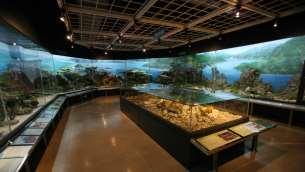


• It provides an educational environment.
Invertebrates section:
• Special built tanks for tiny creatures
MARINE BIODIVERSITY: INTERPRETATION AND RESEARCH CENTER
Fig. 9c. Seashell display
Fig. 10a. Fossil library
Fig. 10b. Invertebrates section
MARINE BIODIVERSITY: INTERPRETATION AND RESEARCH CENTER

A) Technical data: FRESH WATER AQUARIUM SETUP
1. Essentials and accessories:
• Basic requirement: a good tank, a solid stand, quality accessories and maintenance tools.
• To determine which kind of what items you need, first we have to look at the type of aquatic life you want to keep.
• Fresh water fishes come in all shapes and sizes. E.g. Betta fish prefer smaller tanks with almost no current while Oscars cichlids need lot of room to grow and can swim in water with low currents.
2. Furniture: Desktop tanks
• Compact design
• Ideal for limited number of small fishes
• May include built in filter and light
Standard aquariums
• Small medium and large size tanks can be used
• Larger tanks require strong stand for support
• Glass or acrylic
Kits
• Includes filter, hood, start-up conditioner and food
• Filtration and light may be built into the system
• Great for first time aquarists
Stands
• Reinforced designs to hold up heavy tanks
• May include supply shelves
3. Lighting: Hood
Fluorescent bulb
Halide bulb
Stands
LED lamp
Incandescent bulb
• Covers tank to escape fish escape and evaporation
• Adjustable designs available
• Most popular for fresh water aquariums
• Comes in wide range of spectrum
• Ideal for planted aquariums
• May produce heat and requires special fixtures
• Reinforced designs to hold up heavy tanks
• Energy efficient and allows colour customization
• Inexpensive, easily replaceable.
• uses more electricity
4. Filters and Media:
• Filter is the key to keep the tanks clean
• Type of filter depends upon: Size of the tank and need of the fish
• Canister filter (external filter system with powerful pump where three stage filter media can be replaced separately), Power filter (standard over the tank filter with variety of sizes and can be replaced) and Filter media (mechanical filter, biological filter and chemical filter)
5. Climate control:
• Fishes have different tolerances to water temperature

Thermometer
• Helps monitor water temp.
• In tank and external available.
• Digital options available.
Heater
• Helps regulate tank temp.
• Adjustable thermostats offer precise temp.
• External and submersible heating options available
Chiller
• Ideal for large cold-water tanks
• Expensive
Factors affecting aquarium design:
1. Planning
• Should facilitate smooth circulation since it has chances of being crowded
• Has 2 areas: Public zone (includes all exhibits and recreational area) Services area (for maintaining the display and functioning)
2. Circulation
• It should be convenient, safe and aesthetic
• Should have enough space for smooth circulation, ventilation and sound insulation
• Attention should be given to various necessary operations.
• It is important that the exit is convenient to people in case of emergency.
MARINE BIODIVERSITY: INTERPRETATION AND RESEARCH CENTER
WATER SUPPLY SYSTEM:
There are 3 types of water supply system-
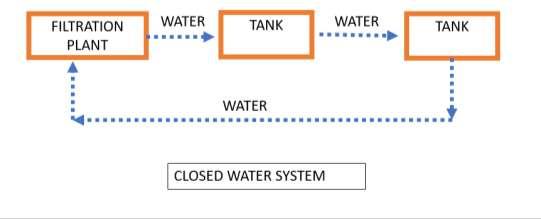


• Open water system

• Semi-closed water system
• Closed water system
Construction of Tank:
• Acrylic is half the weight of glass and is easier to ship, move and set up
• Acrylic is stronger than glass and will not shatter as it has better molecular bonds
• Acrylic doesn’t allow reflections hence giving clearer view
MARINE BIODIVERSITY: INTERPRETATION AND RESEARCH CENTER
TANK DIMENTIONS:
Tank LengthL = tank length
FL = expected maximum fish length
Tank WidthW = tank width and
FL = expected maximum fish width

Tank HeightH = tank height and
FH = expected maximum fish height
Peaceful fish, peaceful tankmates: L = FL x 4
Aggressive fish, good swimmers: L = FL x 5 x 1.2
Aggressive fish, poor swimmers, ambush predators: L = FL x 5
Aggressive fish, cruise predators: L = FL x 5 x 1.5
Mild temperament, cruise predators: L = FL x 5 x 1.3
Pair of aggressive fish, cruise predators: L = FL x 5 x 1.5 x 1.2
Fish body width < 5cm: W = FL x 1.2
5cm < Fish body width < 20cm: W = FL x 1.3
10 < Fish body width < 20cm: W = FL x 1.4
Fish body width = 40cm: W = FL X 1.7
Fish body width < 5cm: H = 20cm + (FH X 2.5)
Fish body width > 5cm: H = 20cm + (FH X 3.5)
Fish body height < 5cm; catfish or freshwater ray: H = 20cm + (FH X 2)
Fish body height > 5cm; catfish or freshwater ray: H = 20cm + (FH X 2)
Thus, for fish over 20-25cm adult body length the tank size should be calculated by the formula, L x W x H as previously described.
MARINE BIODIVERSITY: INTERPRETATION AND RESEARCH CENTER
4.3 Zone 3: RESEARCH AND SERVICE AREAS
1. Quarantine areas
• There are areas where the fishes and sea animals are kept right after they are brought.

• Like environment is given to the animals in order that they adapt to the space and living/feeding habits.
• These are further divided into several areas and variety of other large and tiny tanks to take care differently

2. Research and laboratories

• Research occurs within the field and at the aquarium and research exists with partnership and independently.
• It will comprise of subsequent labs:
1. General lab (chemistry and biology)
2. Botany lab
3. Zoology lab
4. Geological acoustic survey room
5. Monitoring lab – workstation
3. Service floor
• To conserve marine life through display, interpretation, education, research and protest. Aquarium staff and volunteers are involved within the creation of MPA, beach clean-ups, wetland restorations and rehabilitation and also population survey of marine animals and intertidal fishes.
4. Water container and pump system
• An oversized setup of water containers and pumps and filtration system is placed within the basement for the right flow and water quality for the aquarium display.
• Fisheries research h and genera support to the knowledge of the marine environment.

MARINE
BIODIVERSITY: INTERPRETATION AND RESEARCH CENTER
Fig. 11. Quarantine area
Fig. 12. Research and laboratory
2
MARINE BIODIVERSITY: INTERPRETATION AND RESEARCH CENTER

AREA PROGRAMME
Formulation of brief: Space Capacit y Area Total Area Access Type
VISITORS CENTER 1 Reception and waiting 4 pax 60 sqm. Public 2 Lounge 30 pax 50 sqm 3 Orientation space 80 pax 100 sqm. 4 Multipurpose hall 80 sqm 5 Restroom 40 sqm. 6 Medical room 8 pax 30 sqm 7 Souvenir shops 15 sqm x (6) 375
5.
:
1
Edutainment zone: Public 1. Aquarium i Ticket and enquiry counter 50 sqm ii Aquarist and curator 100 sqm iii Feed prep 100 sqm iv Controller room 50 sqm v Aquarium display – fresh water 500 sqm vi Aquarium display – salt water 500 sqm vii Aquarium display – ornamental fish 150 sqm viii Plenum 80 sqm ix Extract room 80 sqm x Water storage 400 sqm
INTERPRETATION CENTER
MARINE BIODIVERSITY: INTERPRETATION AND RESEARCH CENTER

3.
AREA
xi Purification plant 2000 sqm 2. Exhibition rooms i. Sea mammals experience room 500 sq mt ii. Mangroves education zone 500 sq mt 3 Auditorium 800 sqm 4 AR/VR rooms 100 sq.m x (4) 5 Open air classroom 120 sq.m 7 Toilet facility 80 sq.m 9. Exhibition gallery - Sea giants (mammals info centre). - Mangroves interpretation centre. 1000 sqm 7110
RESEARCH
1. For research Private 1 Botany lab 60 sq.m 2 Zoology lab 60 sq.m 3 Seminar room 100 sq.m 4 Observation deck 150sq.m 5 Workstation 100 sq.m 6 conference 20 sq.m 7 Storage 10 sq.m 2 Hatchery - Turtle As per req. - Fish As per req. 3 Breeding areas 500 sq mt 4 Quarantine areas 500 sq mt 1500
MARINE BIODIVERSITY: INTERPRETATION AND RESEARCH CENTER

4. DINING AREA 1 Café / Canteen 100 sq.m 2 Food court 100 sq.m 3 Restaurant 100 sq.m 4 Central kitchen 150 sq.m 5 Unloading area 30 sq.m 6 Storage 80 sq.m 7 Toilets 40 sq.m 600
ADMIN 1 Manager 15 sq.m Private 2 Accountant 15 sq.m 3 Staff area 50 sq.m 4 Toilet 20 sq.m 50
MAINTENANCE 1 Security 15 sq.m Private 2 IT server 30 sq.m 3 Landscape 20 sq.m 65 7. OFFICES 1 Forest minister 15 sq.m private 2 Chief secretory 40 sq.m 3 Chief conservators 20 sq.m 4 Fishery department head 10 sq.m 85
5.
6.
MARINE BIODIVERSITY: INTERPRETATION AND RESEARCH CENTER

8. stay facility - Dormitory 2x10pax 200 sq mt x 2 - Guest houses 5 100sq mt x 5 - Staff quarters 1. Senior scientist 130 sq mt 2. Junior scientist 80 sq mt 1110 Total Assigned areas 10,895 sqm UNASSIGNED AREAS Lobby and passages APD MEP areas APD Staircase and lifts APD 2000 sqm OUTDOOR AREAS 1 Nature trails2 Semi open library2000 sqm Total area 12,895 sqm
7. Site study: Sindhudurg
7.1 Need and justification in the area

Sindhudurg is the southmost district of Maharashtra adjoining Goa. Sindhudurg is the ecohotspot of Maharashtra because of its rich biodiversity. The coast is highly eco sensitive as under 12 km from the coastline we can expect endangered species of Indian humpback dolphins, porpoise, whales and otters which hide in the mangroves.
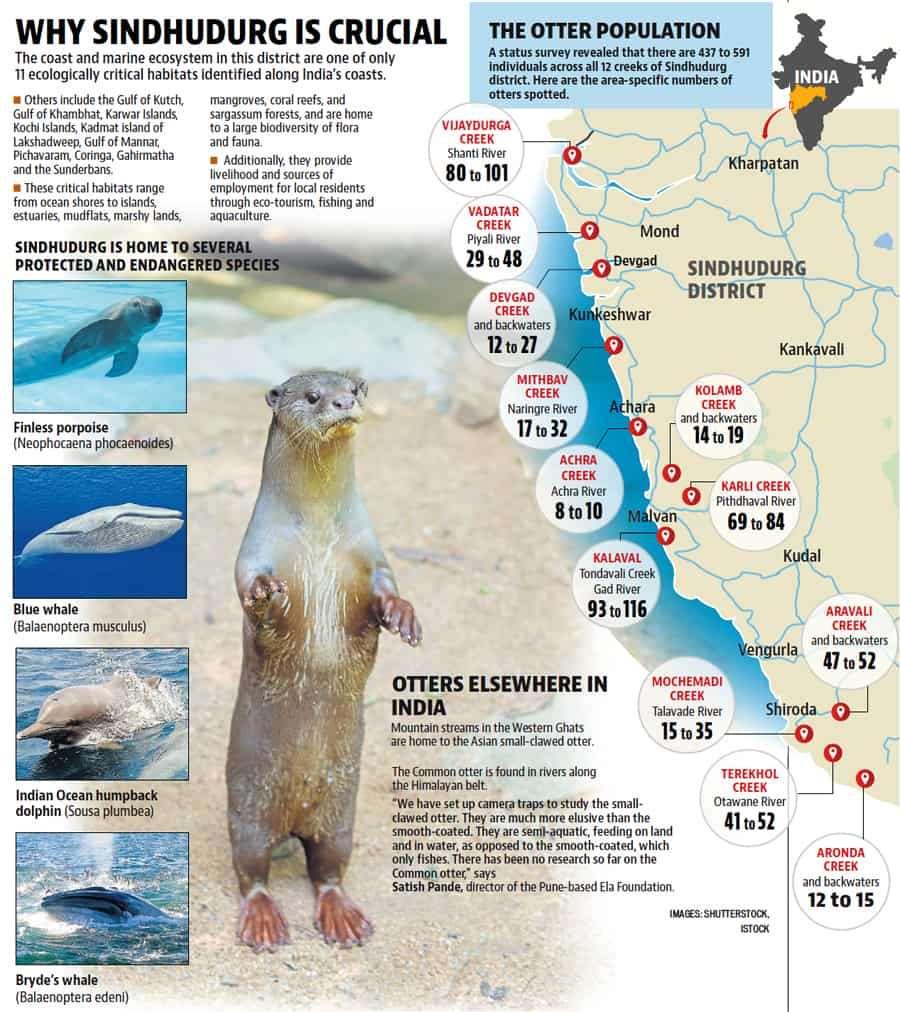
MARINE BIODIVERSITY: INTERPRETATION AND RESEARCH CENTER
Fig. 35. News article about endangered species in coastal sindhudurg
Sindhudurg has recently (in 2020) considered few mangrove areas in the district as ecosensitive. Still its plan to increase the tourism for economic growth brings the challenge to balance both the economy generated through tourists and also the ecological impact on its surroundings and nature. Its beaches are getting blue flag for tourism.
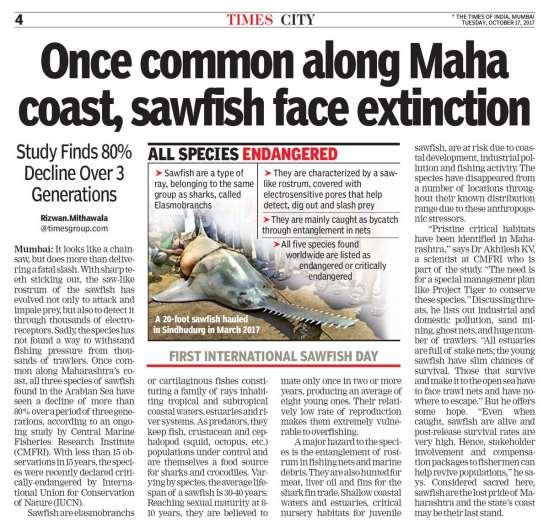

Goa being the neighbouring state attracts maximum number (6 million) of tourists (especially foreign) but due to high tourist inflow and the unplanned tourism its affect can be seen on its environment. Beaches/ dolphin rides and the main attraction here. But it has lost a lot of its biodiversity and shrinkage of mangrove cover leading to the rise of ecological imbalance.
Sindhudurg having a similar yet not so explored clean beaches and its plan to boost tourism are going to attract more tourist and a precautionary measure to sensitize people is going to be needed to avoid making it the second ‘Goa’. Also, while fishing a lot of sea snakes are caught in the net and die due to stress caused by it. Every organism in the marine environment is equally important to support the overall ecosystem. Only research and proper involvement can make a difference.
MARINE BIODIVERSITY: INTERPRETATION AND RESEARCH CENTER
Fig. 36. News article about saw fish extinction
MARINE BIODIVERSITY: INTERPRETATION AND RESEARCH CENTER

7.2 Site in Sindhudurg

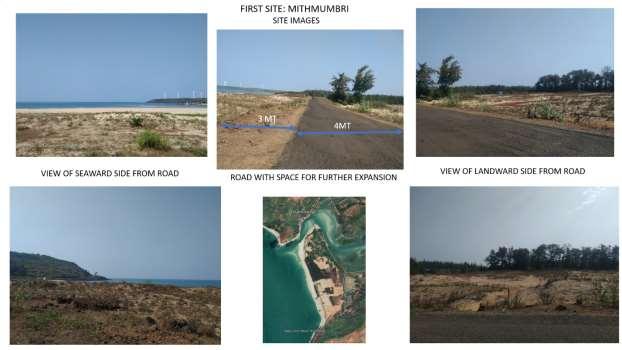


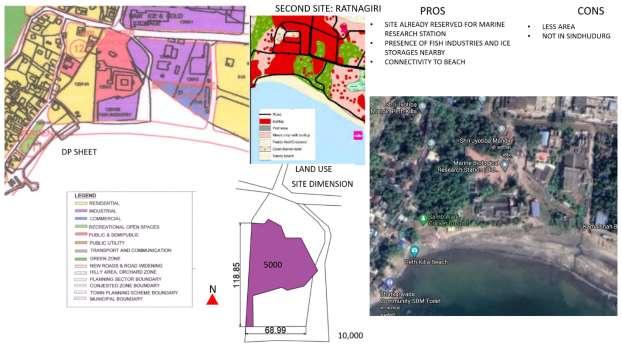
MARINE BIODIVERSITY: INTERPRETATION AND RESEARCH
CENTER
MARINE BIODIVERSITY: INTERPRETATION AND RESEARCH CENTER
8. BIBLIOGRAPHY AND REFERENCES
https://marine-conservation.org/
https://www.iucn.org/theme/environmental-law/our-work/oceans-and-coasts/mangrovegovernance-conservation-and-use

https://mangroves.maharashtra.gov.in/Site/SiteInfo/Pdf/MMS-RMP.pdf
Blue whales spotted off Sindhudurg coast after 100 yrs | Business Standard News
https://www.in.undp.org/content/india/en/home/post-2015/sdg-overview/goal-14.html
Blue whale in Sindhudurg waters
https://www.thegef.org/news/people-and-sea-mainstreaming-marine-conservation-productionsectors-india
https://www.sacon.in/wp-content/uploads/2018/03/2017-PR191-UNDP-Sindhudurg-Report.pdf
https://www.archdaily.com/784055/wasit-natural-reserve-visitor-centre-x-architects
https://www.slideshare.net/AbuSafwan2/abu-safwan-thesis-report
https://www.blue-world.org/science-education-losinj/msm/
https://sindhudurg.nic.in/en/
https://miesarch.com/work/142
https://www.ozeaneum.de/en/
Indian Ocean Marine Research Centre Watermans Bay : Campus Management : The University of Western Australia
MARINE RESEACH & EDUCATION CENTER SCHEMATIC DESIGN SITE PLAN | Download Scientific Diagram
Marine Education Center by STUDIO.BNA architects - Architizer
2.-CRZ-Reference-manual.pdf
Fish Tank Size Calculation(Dimensions & Volume) | Petaddon



 Ms. Rutuja Mohan Kankekar
Ms. Rutuja Mohan Kankekar







 Fig. 6. Importance of mangroves
Fig. 7 Drivers of mangrove loss
Fig. 6. Importance of mangroves
Fig. 7 Drivers of mangrove loss



























